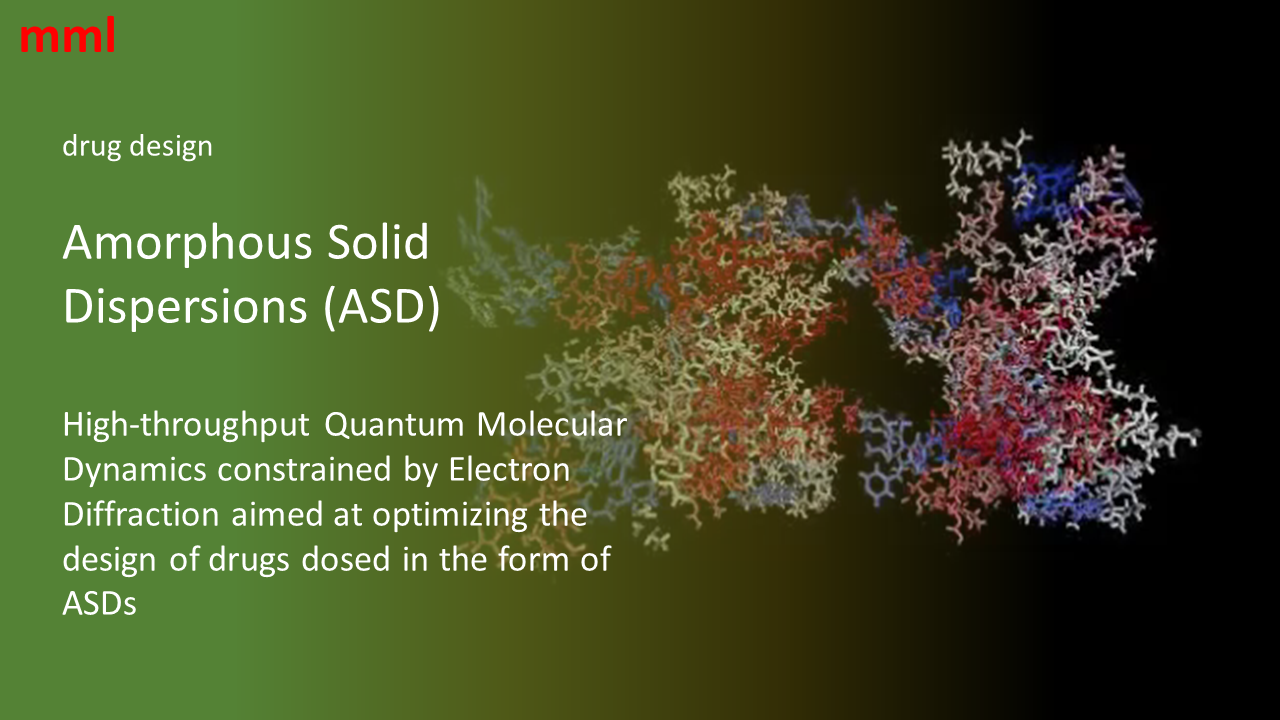The challenge
Drug bioavailability is deemed to be enhanced when mixtures of Active Pharmaceutical Ingredients (APIs) and polymer excipients are dosed as Amorphous Solid Dispersions (ASD). ASD design is based on the optimal choice of API and excipients, out of a vast array of different possible compounds and compound compositions, which greatly affect the amount of API in the solid solution (solid solubility limit) and the stability of the ASD; a measure of the latter is the degree of Amorphous Phase Separation (APS, the tendency for separation into API-rich and API-poor clusters within the ASD), as a function of time, temperature and humidity. Although experimental methods do exist for the inference of ASD solubility and stability, all depend on trial and error and none have any a priori prognostic capabilities able to facilitate ASD design.
Our research
Aiming to address ASD design, we developed ActiveRank, a framework for high-throughput computational screening of ASD stability. ActiveRank yields the system’s solubility curve, from which binodal and spinodal points can be determined at any temperature. This R&D pivots on our previous development and implementation of combined electron diffraction and high-throughput quantum chemical modelling which enabled the direct detection of ASD density and the ASD solid solubility limit. We determined that this technology allows high-throughput miscibility screening of candidate API/excipient combinations without prior experiments. Additionally, we work on algorithms which analyze and report APS trends as well as visualize API-polymer, polymer-polymer interactions, effect of humidity and solid-state diffusion.
ActiveRank implementation
System-agnostic prediction of pharmaceutical excipient miscibility via computing-as-a-service and experimental validation
